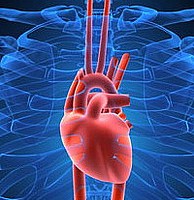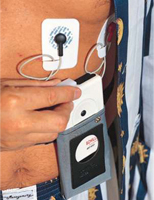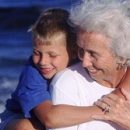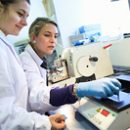Signs of myocardial infarction in men and women. How to recognize the first symptoms of the disease and provide first aid to the patient.
Content
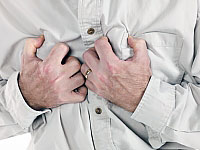 Myocardial infarction — This is a complication of coronary heart disease, its legitarious, although not obligatory. There is a pathology with a complete blockage of one of the crown arteries or its branches. Signs of myocardial infarction are quite diverse, and sometimes to recognize them is not so simple.
Myocardial infarction — This is a complication of coronary heart disease, its legitarious, although not obligatory. There is a pathology with a complete blockage of one of the crown arteries or its branches. Signs of myocardial infarction are quite diverse, and sometimes to recognize them is not so simple.
Signs of myocardial infarction in women and men: clinical forms
The manifold of signs of myocardial infarction led to the fact that the doctors were conventionally divided into several clinical forms:
- An angular version is a typical form of the disease. Occurs in 75-90% of patients. Basic manifestation — Breastache, which is not removed by nitroglycerin taking (tablets or spray). Often it gives to the left blade and hand, in the inter-opacpid region, less — in the neck and lower jaw. Very important to diagnose such a symptom as «Fear of imminent death». The patient is alarming, lies almost motionless, weakness is noted. At the request to show where it hurts, the patient points the place of pain with a compressed fist. It is also a sign of cardiac pathology and is called «Symptom of compressed fist».
- With an asthmatic version, signs of cardiac asthma are coming out: shortness of breath or suffocation, heartbeat, forced position (orthopnee). The latter is the choice of the patient sitting, with an emphasis on the edge of the bed. Pain occurs infrequently, and its intensity is low. Sometimes only after careful questioning the patient can remember the pain.
- The gastralgic option (or abdominal shape) strongly resembles an acute pathology in the abdominal cavity. Localized pain at the top of the abdomen. The clinical picture of the disease resembles sharp pancreatitis or ulcerative damage to the stomach. Reinforce the confusion of belching, hiking, nausea and vomiting, sometimes re. All this is so much reminiscent of acute pancreatitis, which is often in the first hours of the patient's disease begin to treat precisely from this disease. Only with the help of ECG you can reveal the true cause of abdominal pain.
- The arrival is characterized by the development of heart arrhythmias. Patient complains of interruptions, heartbeat, «Stop heart» For a moment. Pain either no, or they are so weak that they do not attract the attention of the patient. Because of the deterioration of the brain power, a sharp drop in blood pressure is possible. There may be fainting. Part of the patients occurs shortness of breath.
- Cerebrovascular (or cerebral) option manifested by signs of deterioration of the blood supply of the brain. Heart complaints may be absent completely. The most frequent signs are dizziness, confusion, disorientation, speech distortion, fainting, vomiting. Focal symptoms are possible: paralysis, paresis, sensitivity disorders in certain areas of the body. Sometimes cerebrovascular symptoms are expressed so much that it can completely disguise signs of heart attack.
- A low-spirited form in women and men meets the same often. It is usually a random find during preventive inspections. It is detected by studying the data of electrocardiography, while on the film shows signs of already suffering infarction. Careful questioning patient most often allows you to reveal the moment of ischemic attack in the past. Symptoms, however, is not much different from the usual attack of angina, so the patient does not appear to the doctor, carrying the disease on the legs.
First aid with myocardial infarction
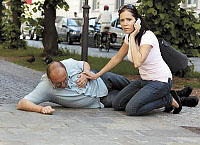
- The most important — Keep calm, do not give in panic.
- Patient needs to be put, lifting the upper half of the body by 40 degrees.
- Should provide air flow — unbutton upper shirt buttons. Remove tie, make a patient on the air or open the windows.
- Give the patient a nitroglycerin tablet under the tongue or apply the drug in the form of spray. Repeat the procedure three times.
- Give a patient to drink aspirin half.
- Call «ambulance», explain what and when it happened, call exact address.
- In case of a sudden deterioration of the patient's condition, the loss of consciousness immediately check the pulse on the carotid artery, to evaluate whether a person breathes. In the absence of a pulse and breathing to start the outer heart massage and artificial respiration.
Signs of heart attack — It is most often pain in the middle of the chest, weakness, shortness of breath. When any of these symptoms appear, do not waste yourself and do not lose time. Call «ambulance» and begin to take measures to save the patient. So you will increase its chances of survival and return to normal life in the future.



